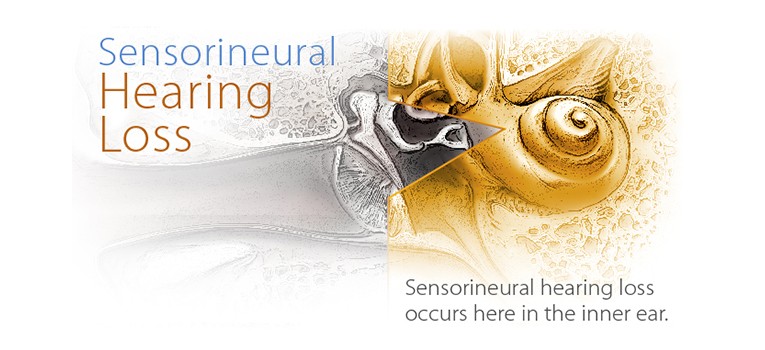Sensorineural hearing loss is usually more common amongst older people with 23% of people older than 65 years suffering from this condition. Sensorineural is a term indicating lesion in the eight nerve or cochlear. However, sensorineural hearing loss is common in children as well, and most common cause is genetic.
Sensorineural Hearing Loss at Birth
When permanent hearing loss is detected at birth then in most cases, it is sensorineural. Luckily, most children having genetic sensorineural hearing loss are physically healthy and their hearing disorder is called nonsyndromic sensorineural hearing loss. Fifty percent of the children suffering from hearing loss have genetic sensorineural hearing loss. In most such cases, both parents will have normal hearing because of the recessive nature of the genes that cause sensorineural hearing loss. Nevertheless, when each of the hearing parents have one normal hearing gene and one hearing loss gene, their child could get two hearing loss genes, which is one from each of the parents.
Apart from a genetic cause, some children have hearing loss due to a syndrome. In such cases, presence of hearing loss is in association with some other medical issue. Here are the syndromes that are associated with genetic sensorineural hearing loss –
Usher’s syndrome
Pendred’s syndrome
Jervell and Lange-Nielsen syndrome
Waardenburg’s syndrome
Sensorineural hearing loss at birth can also be caused by certain infections the mother could have suffered during pregnancy. Such infections include syphilis, cytomegalovirus, rubella, and toxoplasmosis. When sensorineural hearing loss present at birth is due to non-genetic causes then such cause is non-identifiable half the time.
Development of Sensorineural Hearing Loss in Children after Birth
There are instances of children having normal hearing at birth, who develop sensorineural hearing loss later on due to some life-threatening or severe disease or illness. For instance, children having a life-threatening condition at birth like congenital diaphragmatic hernia, where the intestines are present in the cavity of the chest and causing lung compression, are at a higher risk of developing sensorineural hearing loss.
Another reason is development of respiratory issues after birth that need measures for life saving like ECMO (Extracorporeal Oxygenation), oscillating ventilator, or mechanical ventilator. These children are also at higher risk of developing hearing loss. Other risk factors in development to sensorineural hearing loss after birth include poor apgar scores, taking certain medications, and high levels of bilirubin. Such risk factors may not directly cause hearing loss, but could increase the risk of damage to inner ear or loss of hearing due to reasons that are still being investigated.
Other Reasons for Pediatric Sensorial Hearing Loss
Sensorial hearing loss in children could also occur due to –
Intake of certain medications that are known for their potentiality to cause hearing loss
Exposing the child to loud noises, particularly when it is for long periods
Severe concussion or fracture to the part of the skull protecting the ear, caused by some trauma
Complete or partial hearing loss could also occur due to bacterial meningitis
Importance of Monitoring Hearing in Children
Experts have found that it is very important to monitor hearing in children who are at risk, even if they have passed the hearing test at birth. Repeated testing every six months is recommended for the next several years, as such test can detect delayed onset of sensorineural hearing loss.
Managing Pediatric Sensorineural Hearing Loss
The degree of hearing loss in a child due to sensorineural hearing loss can only be managed by fitting the required hearing aids. It is important to accurately diagnose the level of hearing loss of each ear before fitting hearing aids.
Children with profound hearing loss may not get benefitted with hearing aids and cochlear implant surgery may be advised.




